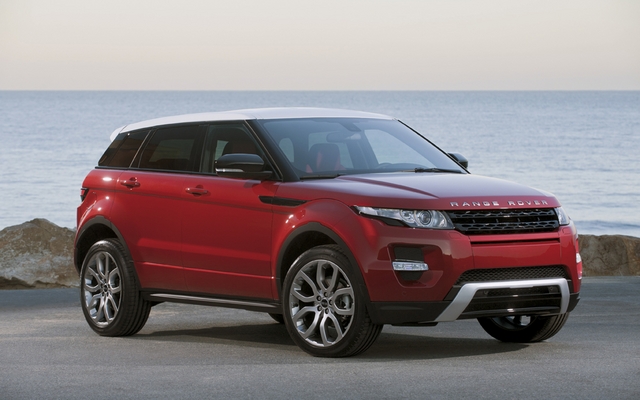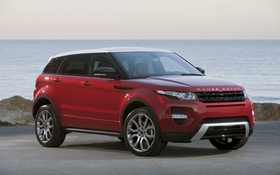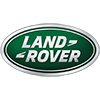2012 Range Rover Evoque: The new baby Rover
When shopping for a luxury SUV, very few people think immediately of Land Rover. Like Jaguar, the English manufacturer is now owned by the Indian automaker Tata and is no Johnny-come-lately. For decades, Land Rover has offered vehicles capable of taking on both the African jungle, thanks to its off-road capabilities, as well as the social jungle, thanks to its luxury and prestige. This year, to take advantage of the popularity of compact luxury SUVs and potentially boost sales, the manufacturer is introducing the Range Rover Evoque, the lightest, most compact, and most fuel efficient model it has ever produced.
Since it bears the Range Rover name, the Evoque is meant to be a more posh version of the LR2, a model that bears the Land Rover name. Furthermore, contrary to our initial assumptions, the two vehicles share practically no components. The Evoque is made to rival the Audi Q5, Mercedes-Benz GLK, BMW X3 and Volvo S60. It will also be the manufacturer’s greenest model because of its reduced engine capacity and because its entire design revolves around reducing its environmental footprint (in particular by using recycled materials for several features). Moreover, the body is made completely of aluminum, guaranteeing that the vehicle is incomparably light.
Coupe and wagon
The unique style and character of Land Rover models have always been attractive. These vehicles really stand out from the crowd, and the Evoque is no exception. It looks great in photos and even better in person. Inspired by the LRX concept model presented at the 2008 Detroit Auto Show, the Evoque sports a very dynamic style thanks to its plunging roofline. Sure, that’s a common feature these days, but combined with a waistline that rises at the back and a very small window, you get a rather unique appearance. Twenty-inch rims, offered on some trim levels, give it even more presence. There’s no doubt that this SUV will turn heads with its style and choice of colours, some of which are very flashy indeed.
The Evoque sets itself apart from the competition by coming in two configurations: a coupe and a five-door. Although it’s somewhat lacking in practicality, there’s no denying the coupe’s style. It’s also a little lower (30 mm) than the five-door version. Both are sold with different thematic packages that affect the aesthetics, ranging from assorted rocker panels to body variations.
Four-cylinder turbo engine
Under the hood, the only engine offered in Canada will be a 2.0-litre four-cylinder that is brand-new at Land Rover. Very modern, this engine offers direct injection technology and develops a more than reasonable 240 horsepower and 251 lbs-ft of torque. It’s paired with a six-speed manual transmission. According to the manufacturer’s figures, it can go from 0-100 km/h in about 7.6 seconds.
Of course, the Range Rover comes standard with all-wheel drive and, like all of this constructor’s models, it has good off-road capabilities. Obviously, there are very few people who will go into the woods with it, but the Evoque won’t be pushed around in any conditions. A control with various pictograms that represent different driving types (snow, sand, off-road...) helps you choose the most suitable driving mode for the conditions.
On board, you’ll find typical Range Rover luxury and sophistication. It really feels like a smaller Rover. The only thing that distinguishes it is the round transmission control, borrowed from the Jaguar XF and XJ, that deploys from the console once you start the vehicle. As for the rest, we like the comfort, meticulous finish and quality.
A world premiere test drive
For the launch of the Evoque, we were invited to the Land Rover Development Centre in England to attend a technological seminar on the vehicle, but the organizers didn’t plan on actually letting us drive it. The only thing on the agenda for us was a dynamic test drive as passengers. Not taking no for an answer and unbeknownst to our public relations director, I insisted on trying it myself. This paid off and, with the approval of a few people employed by Land Rover, I was allowed to slide in behind the wheel and drive a few kilometres on the test track.
For starters, finding a good driving position is easy. The steering wheel is comfortable and the front visibility is excellent. However, as one would suspect, the smaller rear window reduces visibility. Once you’re moving, the little four-cylinder engine demonstrates unexpected moxie. Sure, you won’t get the same output as you would with a six-cylinder, but the turbo’s high torque in low gear results in great linear accelerations. The six-speed automatic transmission performs very well and shifts without hesitation. Only the sound of the engine gives away the reduced number of cylinders. According to the manufacturer’s figures, the Evoque will have a excellent fuel consumption averaging at 8.7 L/100 km – but those numbers have yet to be verified.
The Evoque is also the first of this brand’s vehicles to feature electric power steering. To round out the exclusives, it can, depending on the trim level, include a magnetic suspension that adjusts the firmness of the shocks and maximizes comfort and performance based on road conditions. An electric current causes a reaction in the magnetic liquid in the shocks, resulting in significantly faster reaction time compared to similar systems that control fluid levels in the shocks.
For the sake of discretion, I had to surrender the wheel to my chaperone before the finish line so as not to hurt the feelings of my Italian colleagues who did not enjoy the same privilege. Move over, James Bond!
As for the Evoque, it enters a segment in which several other manufacturers have made a killing. The product seems great and it’s a safe bet that we’ll see a lot more Land Rover insignia on our roads once this model arrives in the fall. Let’s hope that reliability, an area for which this auto maker is often criticized, isn’t going to be an issue. But Land Rover maintains that the battery of endurance tests that the Evoque has undergone was conclusive. That’s yet another thing that needs to be verified, but in the meantime, let’s give the Evoque the benefit of the doubt.












